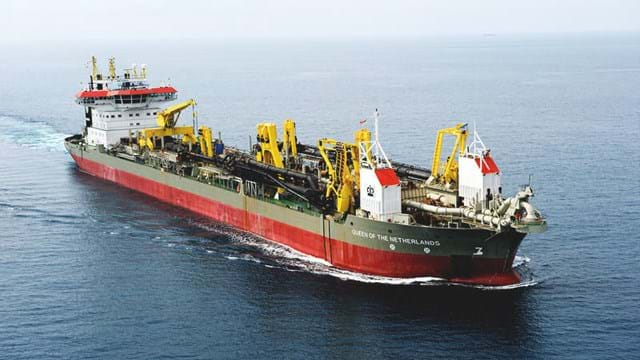The Shell Bukom Refinery on Bukom Island imports the bulk of its crude oil feedstock through a Single Buoy Mooring (SBM) situated approximately 5.2 km from the island in the deeper water necessary to accommodate Very Large Crude Carriers.
The SBM is connected to the shore by a 48” concrete weight coated submarine pipeline. To extend the operating life of this pipeline, a 2.7-km section starting at the Pipeline End Manifold (PLEM) containing most of the corroded spots was replaced. The overall project scope included laying approximately 2.7 kilometers of new pipeline in the re-routed trenched corridor, de-oiling the existing pipeline, removing the existing SBM buoy and PLEM, in-situ inspection of the SBM mooring chains, de-burial, cutting and removal of the existing pipeline at both tie-in locations, installation of the new PLEM, associated tie-in connections between the newly laid pipeline and the existing facilities, re-installation of the SBM, hydro-testing and final leak testing of the modified facilities. The scope was extended to include the removal of the replaced pipeline section. Due to the close proximity to the existing SBM and its mooring chains, soil surveys requiring anchored vessels could not be carried out on a potential hard spot. There was a serious concern that dredging this section would not be possible using the proposed dredging equipment during pipeline outage. Boskalis suggested dredging this particular trench section using the Trailing Suction Hopper Dredger (TSHD) Queen of the Netherlands with a ripper draghead well in advance of the actual trench dredging works. The ripper draghead broke and removed the weathered rock and overlying, stiff to very stiff, clay and gravel.

